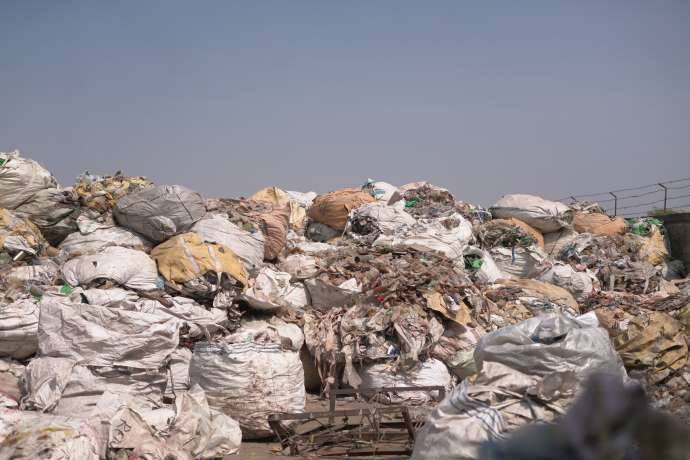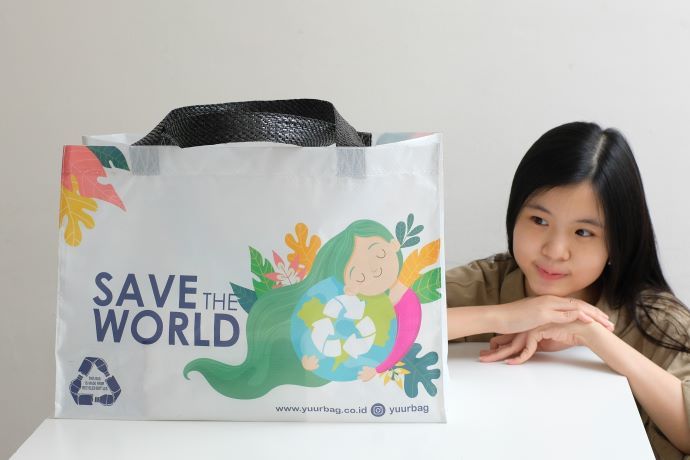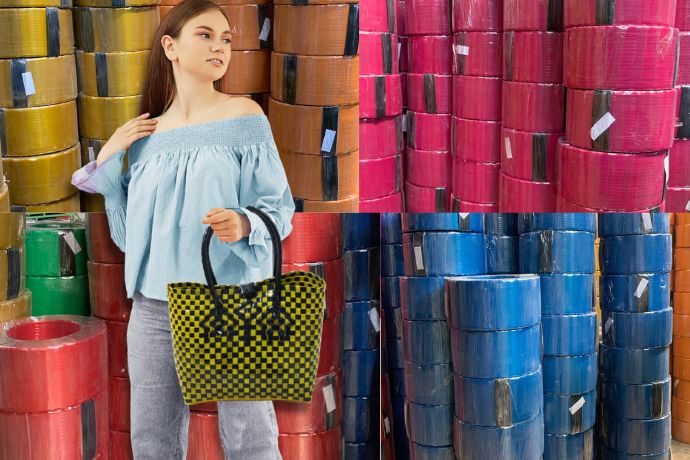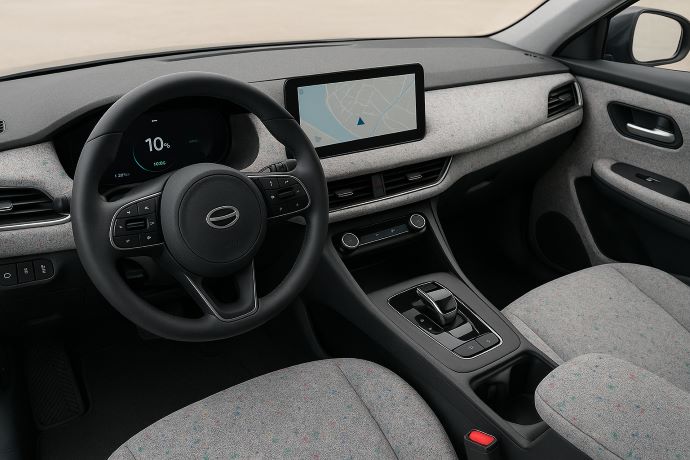Recycled PET Properties: Strength, Heat, Clarity & Uses
Key Takeaways:
- Comparable to virgin PET: high-quality rPET recycled PET (rPET) can achieve mechanical, thermal, and chemical properties close to virgin PET, making it suitable for packaging, textiles, and automotive uses .
- Lower environmental impact: Using rPET reduces carbon emissions by up to ~1.3 kg CO₂e per kg compared with virgin PET, and helps keep plastic out of landfills and oceans.
- Versatile applications: From agriculture and construction to retail packaging and fashion, rPET enables manufacturers to meet performance needs while aligning with sustainability goals.
PET and Its Core Properties
Polyethylene Terephthalate (PET) is a thermoplastic polymer widely used in packaging, textiles, and industry. Its appeal comes from a unique mix of:
- Strength & durability – withstands high stress and impact.
- Chemical resistance – stable against many solvents and acids.
- Thermal stability – retains structure under heat.
- Clarity – transparency ideal for bottles and packaging.
These same advantages make PET an excellent candidate for recycling into high-quality rPET.
rPET vs Virgin PET: Property Comparison
Here’s how recycled PET compares with virgin PET based on typical reported values:
| Property | Virgin PET | rPET (bottle-derived) | Notes |
| Tensile strength (MPa) | 55–75 | 50–72 | Overlaps; depends on IV and contaminants |
| Young’s modulus (GPa) | 2.0–2.4 | 1.9–2.3 | Stiffness remains close |
| Glass transition (°C) | 70–80 | 65–78 | Slightly lower due to chain scission |
| Melt flow index (MFI) | low | typically higher | Higher MFI = lower molecular weight, affects molding |
Takeaway: high-quality rPET overlaps well with virgin PET ranges, but quality depends on feedstock and processing.
PET Recycling Process
The rPET journey begins with collection and sorting of PET bottles. After washing and shredding, flakes are processed by:
- Mechanical recycling – melting and re-forming into flakes or pellets.
- Chemical recycling – breaking PET down into monomers, then re-polymerizing.
Learn More : Things You Need to Know Before Buying Recycled PET
At Langgeng Jaya Group, we focus on high-quality recycled PET flakes produced through advanced sorting and cleaning. Our solid-state polycondensation (SSP) and filtration steps help restore intrinsic viscosity (IV), ensuring durability and clarity.
This guarantees the recycled material can be used across various applications without compromising quality.
Of course, this process isn’t without its challenges. Contamination and inconsistent quality in the material can sometimes affect the final product.
However, with modern advancements in recycling technology, Langgeng Jaya Group is able to produce high-quality rPET more efficiently than ever before.
Processing Guidance for Manufacturers
Using rPET may require small process adjustments:
- Blow molding: Up to 30–50% rPET is common; higher loads may require SSP or chain extenders to restore viscosity.
- Fiber spinning: Pre-drying is essential; blends of 10–30% are widely used in textiles.
- Injection molding: Higher MFI rPET may need slower injection speeds and slightly reduced melt temperatures.
Our team provides spec sheets and processing guidance so you can adapt rPET seamlessly.
Key Properties of Recycled PET (rPET)
When properly processed, rPET delivers:
- Strength and Durability: rPET has mechanical properties that closely match those of virgin PET. This means we can use it for applications requiring robust, durable materials, such as packaging and textiles.
- Chemical and Heat Resistance: rPET remains stable under a wide range of chemical exposures and temperatures, making it suitable for various industrial applications.
- Clarity and Color: When recycled properly, rPET maintains a high degree of clarity, though the quality depends on the input material and the recycling method used.
With these properties, rPET offers flexibility for manufacturers while still upholding the quality of the end products.
Learn More : Recycled PET vs. Virgin PET - A Comprehensive Comparison
Benefits of Using rPET in Manufacturing
Why should you choose rPET over virgin PET? Here are a few key reasons:
- Lower Carbon Footprint: By using rPET, we’re reducing greenhouse gas emissions associated with the production of new plastic. This directly contributes to slowing climate change.
- Reduced Plastic Waste: Every time you choose rPET, you're helping keep plastic out of landfills and oceans. By supporting the use of rPET, we’re all contributing to a more circular economy.
- Cost Efficiency: Depending on market prices and recycling infrastructure, rPET can offer cost savings over virgin materials, especially as regulatory pressure on using virgin plastics increases.
- Sustainability Standards: As manufacturers, using rPET helps you meet sustainability goals and appeals to eco-conscious consumers. It’s a win-win for business and the planet.
Applications of rPET Across Industries
rPET isn’t just for one sector—it has applications in a wide variety of industries:
- Agriculture: rPET is becoming increasingly popular for agriculture products, such as planter bags and woven sacks, due to its durability and resistance to weathering.
- Shopping Bags: rPET is an excellent choice for manufacturing shopping bags, offering a sustainable and reusable alternative to single-use plastics.
- Construction: rPET can be turned into geotextiles woven and non-woven, which support construction projects by reinforcing soil, enhancing drainage, and protecting landscapes.
- Beverage Packaging: You’ve probably seen bottles made from rPET in stores. It’s widely used for soft drinks and water bottles.
- Textiles: Many clothing brands are now using rPET to create eco-friendly garments. rPET fibers are durable and comfortable, offering an environmentally friendly alternative to virgin polyester.
- Automotive Components: The automotive industry is adopting rPET for parts like insulation and interior trims, where strength and durability are essential.
By choosing rPET, we’re opening up a world of sustainable possibilities across multiple industries.
Conclusion
Incorporating recycled PET into manufacturing processes is not just an eco-friendly decision—it’s also a smart business move.
With its strong properties, versatility, and cost efficiency, rPET can help you reduce your environmental footprint while still producing high-quality products.
As we look to the future, the role of rPET in sustainable manufacturing will only continue to grow.
If you’re interested in learning more about the benefits of rPET and how it can be used in your industry, check out our other articles on the Langgeng Jaya Group website.
Together, we can make a positive impact on the planet through smarter material choices.



